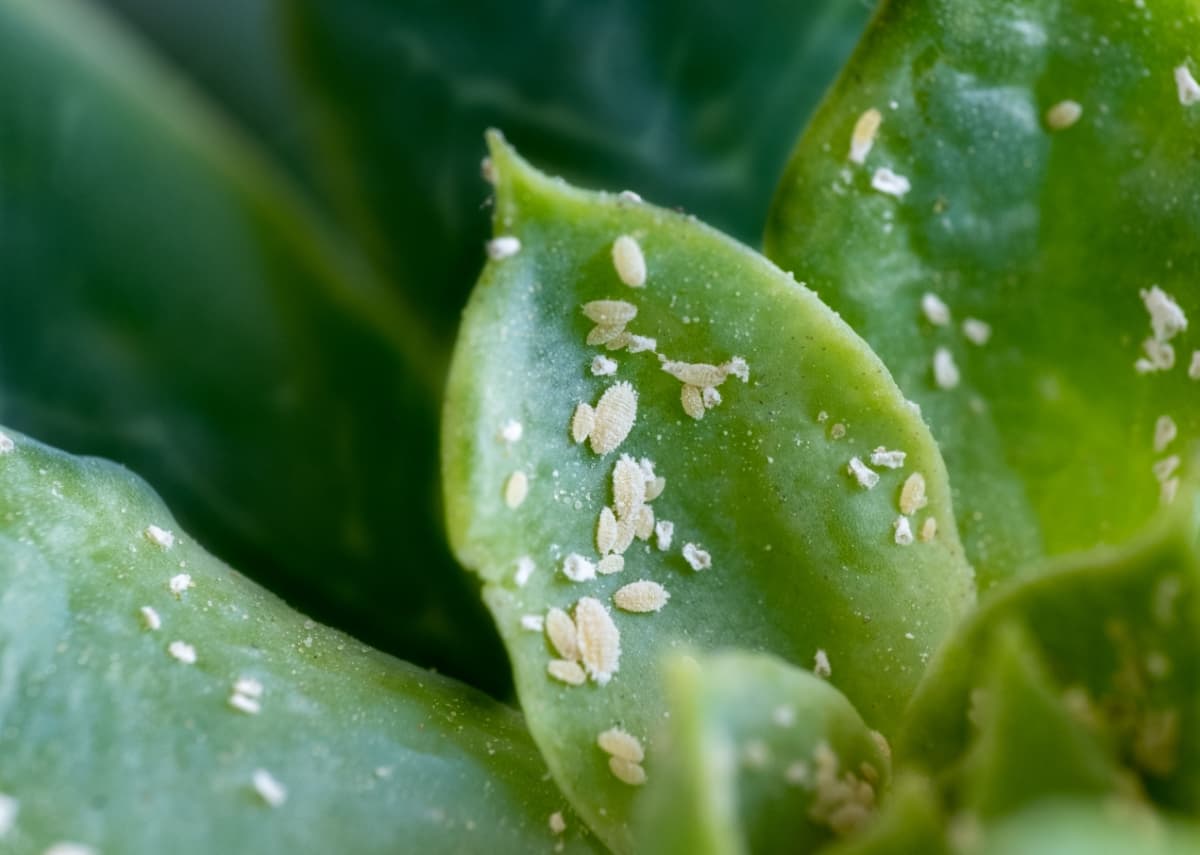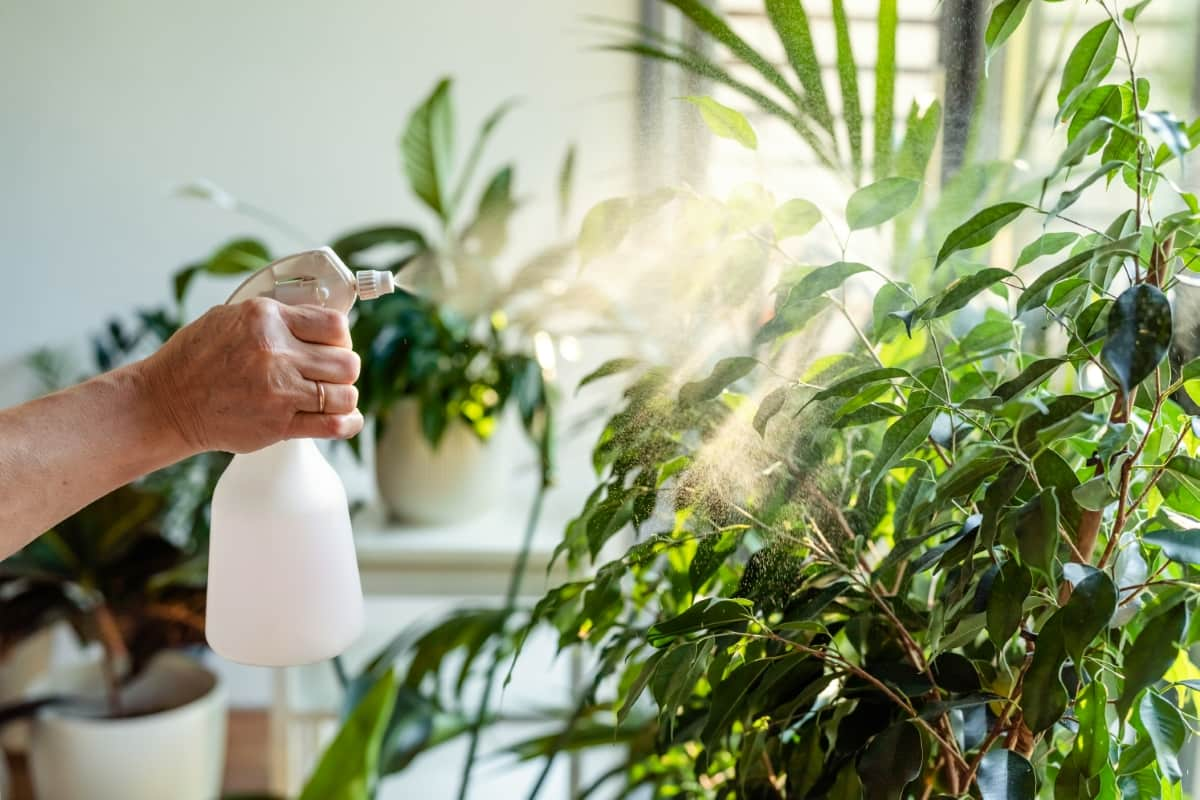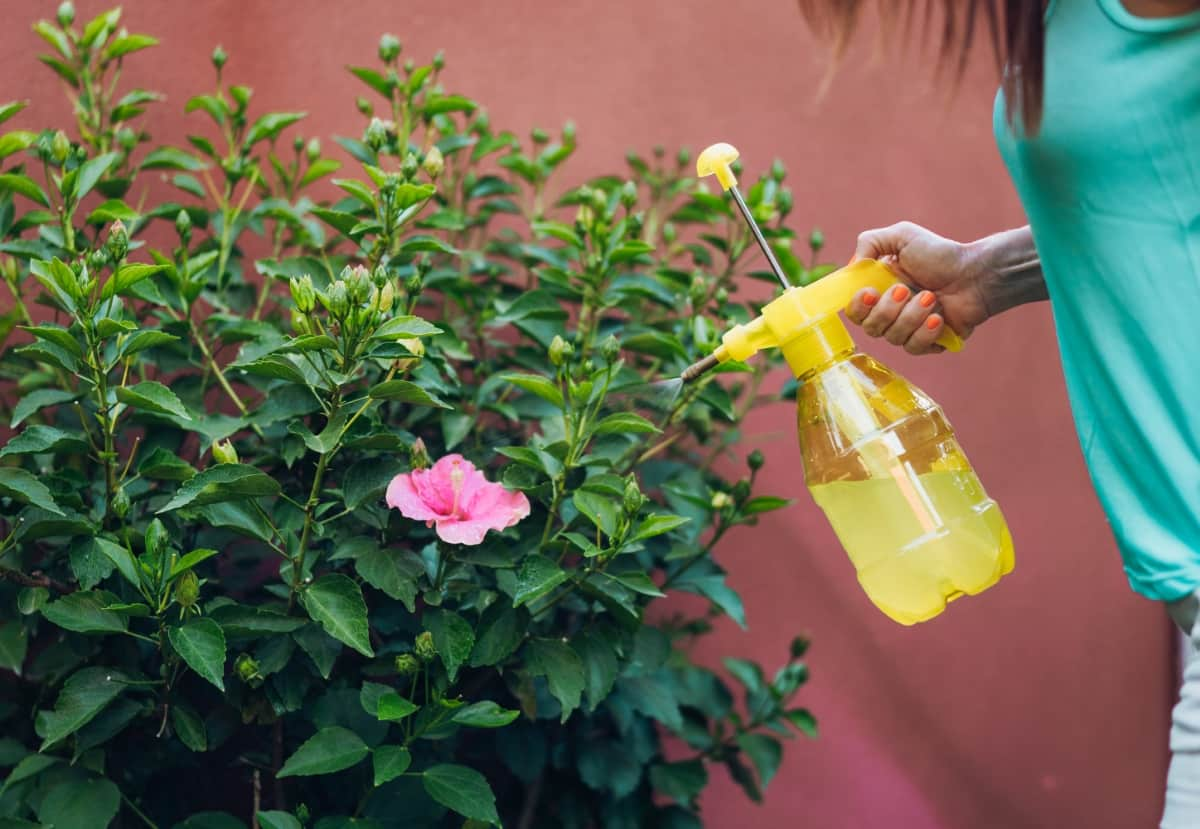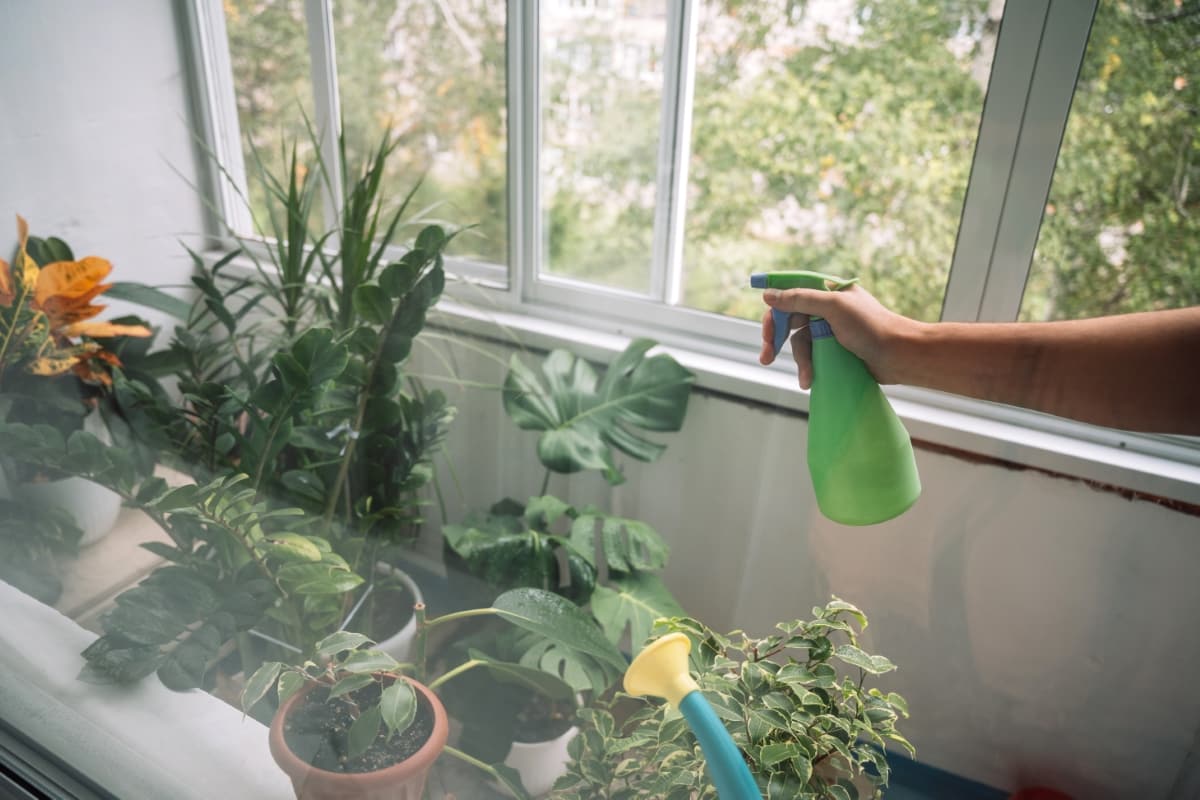This blog explores natural, organic, and eco-friendly remedies. Dive into the world of homemade mealybug sprays, barriers, and deterrents, carefully curated for effective garden pest management. Discover the science behind each solution, ensuring a non-toxic yet powerful approach. Arm yourself with the knowledge to protect your plants with these garden-tested repellent recipes and removal methods, fostering a healthy and mealybug-free garden environment.
Top 10 Homemade Sprays for Mealybugs
Mealybugs Characteristics and Damage Symptoms
Mealybugs belong to the family Pseudococcidae, which includes about 300 species in North America. They are related to scale insects, another group of sap-sucking pests. Mealybugs have soft bodies that are oval or elongated in shape. They have piercing mouthparts that they use to suck the sap from plant tissues.
Mealybugs, found on plant stems, leaves, buds, fruits, or roots, thrive in warm, humid conditions and reproduce rapidly. Female mealybugs lay hundreds of eggs in cottony masses, which hatch into nymphs, smaller versions of adults, which can spread to other plants. Some of the signs of mealybug infestation are:
- White, cottony masses on plant parts
- Sticky honeydew on plant surfaces or nearby objects
- Black sooty mold growing on honeydew
- Ants tending or protecting mealybugs
- Yellowing, curling, wilting, or dropping of leaves
- Stunted or distorted growth of buds, flowers, or fruits
- Reduced plant vigor or death

Hydrogen Peroxide Solution
One of the simplest homemade sprays for mealybugs is hydrogen peroxide solution. Hydrogen peroxide is a common household that has antiseptic and disinfectant properties. It can kill mealybugs by breaking down their protective wax coating and exposing them to oxygen. To make a hydrogen peroxide spray for mealybugs, you will need:
- 1/4 cup of 3% hydrogen peroxide
- 4 cups of water
- A spray bottle
Mix hydrogen peroxide, water in a spray bottle, shake, and spray on affected plant parts, covering all mealybugs. Repeat treatment every few days until no more signs appear.
Vodka and Water Spray
Another easy homemade spray for mealybugs is vodka and water spray. Vodka is a clear alcoholic beverage that contains ethanol and water. It can kill mealybugs by dehydrating them and dissolving their wax coating. To make a vodka and water spray for mealybugs, you will need:
- 1/4 cup of vodka
- 3/4 cup of water
- A spray bottle
Mix vodka, water in a spray bottle, shake, and spray on affected plant parts, covering all mealybugs. Repeat treatment every few days until no more signs appear.
Diatomaceous Earth
Diatomaceous earth, a natural substance derived from diatoms’ fossilized remains, has a powdery texture and sharp edges that can dehydrate and kill insects by cutting through their exoskeletons. To use diatomaceous earth as a homemade spray for mealybugs, you will need:
- 1/4 cup of diatomaceous earth
- 4 cups of water
- A spray bottle
Mix diatomaceous earth and water in a spray bottle, shake, and spray on affected plant parts, covering all mealybugs. Repeat treatment every few days until no more signs appear.
Rosemary and Thyme Spray
Rosemary and thyme are aromatic herbs that have insecticidal and repellent properties. They can kill mealybugs by interfering with their nervous system and deterring them from feeding on plants. To make a rosemary and thyme spray for mealybugs, you will need:
- 1/4 cup of fresh/dried rosemary leaves
- 1/4 cup of fresh or dried thyme leaves
- 4 cups of water
- A spray bottle
Bring the water to a boil and add the rosemary and thyme leaves. Simmer for 15 minutes, and then let it cool. Strain the liquid and pour it into a spray bottle. Spraying the solution on the affected plant parts, making sure to cover all the mealybugs. Repeat treatment every few days until you see no more signs of mealybugs.
Tansy Infusion
Tansy is a flowering plant that has a strong scent and bitter taste. It can kill mealybugs by disrupting their digestive system and repelling them from plants. To make a tansy infusion for mealybugs, you will need:
- 1/4 cup of fresh or dried tansy flowers
- 4 cups of water
- A spray bottle
Bring the water to a boil and add the tansy flowers. Simmer for 15 minutes, and then let it cool. Strain the liquid and pour it into a spray bottle. Spraying the solution on the affected plant parts, making sure to cover all the mealybugs. Repeat the treatment few days until you see no more signs of mealybugs.
In case you missed it: Top 10 Homemade Sprays for Bean Beetles: Get Rid of These with DIY Organic Treatment

Cornstarch Dusting
Cornstarch fine powder made from corn kernels. It can kill mealybugs by clogging their mouthparts and suffocating them. To use cornstarch as a homemade spray for mealybugs, you will need:
- 1/4 cup of cornstarch
- A shaker or a sieve
Sprinkle the cornstarch on the affected plant parts, making sure to cover all the mealybugs. Repeat the treatment few days until you see no more signs of mealybugs.
Cinnamon Powder
Cinnamon is a spice that has antifungal and antibacterial properties. It can kill mealybugs by preventing them from laying eggs and spreading infections. To use cinnamon powder as a homemade spray for mealybugs, you will need:
- 1/4 cup of cinnamon powder
- A shaker or a sieve
Sprinkle the cinnamon powder on the affected plant parts, making sure to cover all the mealybugs. Repeat the treatment few days until you see no more signs of mealybugs.
Tobacco Spray
Tobacco plant that contains nicotine, a toxic substance that can kill insects by affecting their nervous system. Tobacco spray can kill mealybugs by poisoning them and repelling them from plants. To make a tobacco spray for mealybugs, you will need:
- 1/4 cup of tobacco leaves or cigarettes
- 4 cups of water
- A spray bottle
To remove mealybugs from tobacco leaves or cigarettes, soak them in water for 24 hours, strain the liquid, and use a spray bottle to cover affected plant parts. Repeat the treatment every few days until no more signs appear.
Eucalyptus Spray
Eucalyptus is a tree that has aromatic leaves that contain eucalyptol, a compound that has insecticidal and repellent properties. Eucalyptus spray can kill mealybugs by suffocating them and deterring them from feeding on plants. To make a eucalyptus spray for mealybugs, you will need:
- 1/4 cup of fresh or dried eucalyptus leaves
- 4 cups of water
- A spray bottle
Bring the water to a boil and add the eucalyptus leaves. Simmer for 15 minutes, and then let it cool. Strain the liquid and pour it into a spray bottle. Spraying the solution on the affected plant parts, making sure to cover all the mealybugs. Repeat the treatment few days until you see no more signs of mealybugs.
In case you missed it: Top 10 Homemade Sprays for Cutworms: DIY Organic Treatment to Get Rid of Cutworms

Mealybug Prevention Tips
- Inspect new plants for white cottony masses, a sign of mealybugs; isolate and treat with insecticide or natural remedy if found.
- Avoid overwatering to deter mealybugs, as they thrive in moist conditions; water when the top inch of soil is dry, ensuring good drainage.
- Use fertilizer judiciously, as excessive fertilization attracts mealybugs; apply during the active growing season and reduce or stop in winter.
- Wipe plant leaves with diluted neem oil weekly, disrupting mealybug hormonal systems and preventing reproduction; neem oil also offers antifungal and antibacterial protection.
- Maintain adequate spacing between plants to discourage mealybug-friendly humid microclimates and prevent infestation spread.
In case you missed it: Top 10 Homemade Sprays for Leaf Curl: Easy DIY Solutions for Treating Leaf Curl Disease

Conclusion
These Top 10 Homemade Sprays offer effective and natural solutions for eradicating mealybugs. By integrating DIY remedies, from neem oil applications to careful plant care practices, you empower yourself to protect your garden. Embrace these strategies, bid farewell to mealybugs, and foster a thriving, pest-free plant haven.
- Deworming Schedule for Dogs/Puppies: A Beginners Guide
- How to Prevent and Control Parasites in Goats
- Beneficial Insects in Pest Management
- Natural Solutions for Pest Control in Flower Gardens
- Types of Fungicides Used in Agriculture
- Common Issues in the Fruit Development Stage of Pomegranate Farming
- Fruit Development Issues in Papaya: Easy Solutions and Treatment
- Soil-Borne Diseases and How to Protect Your Plants
- Practices to Prevent Disease Spread in the Garden